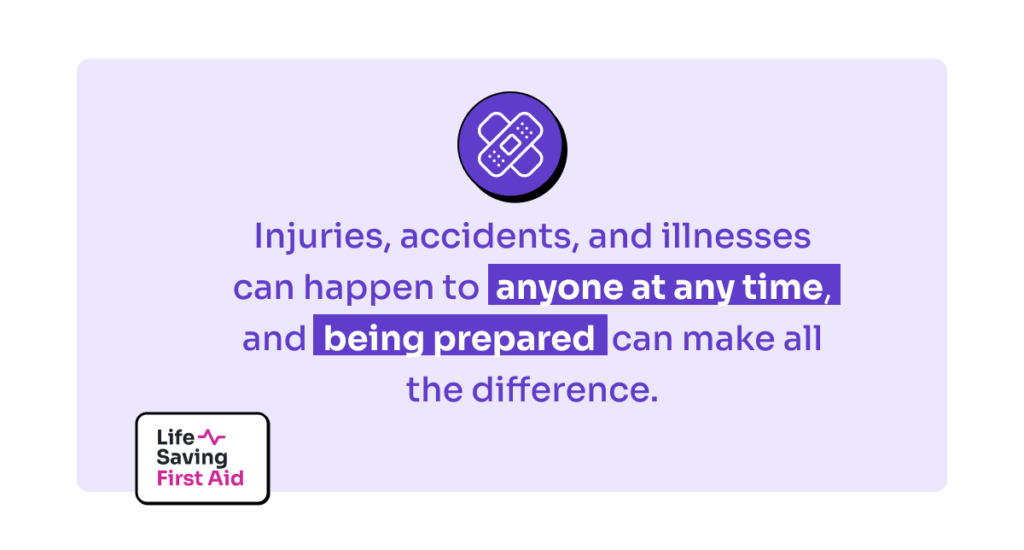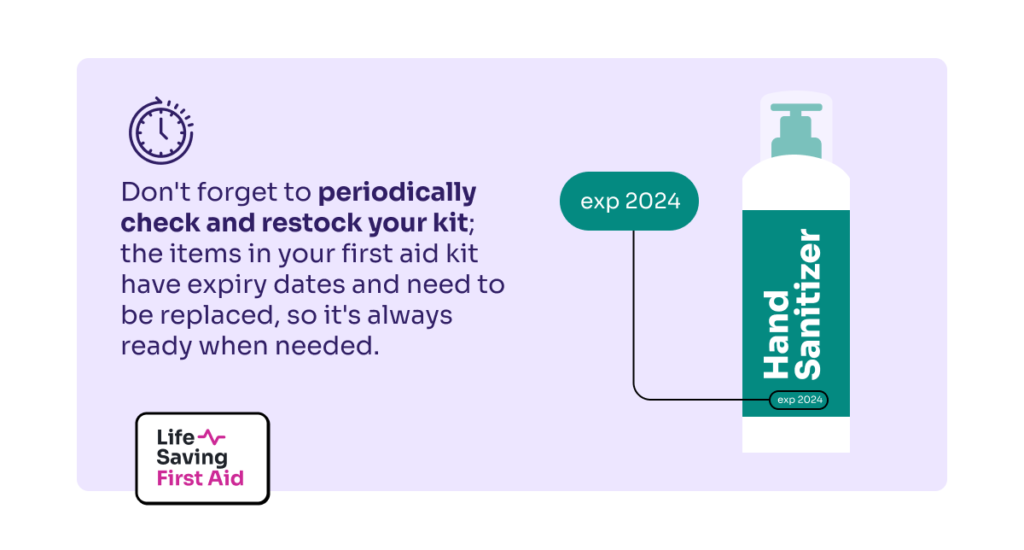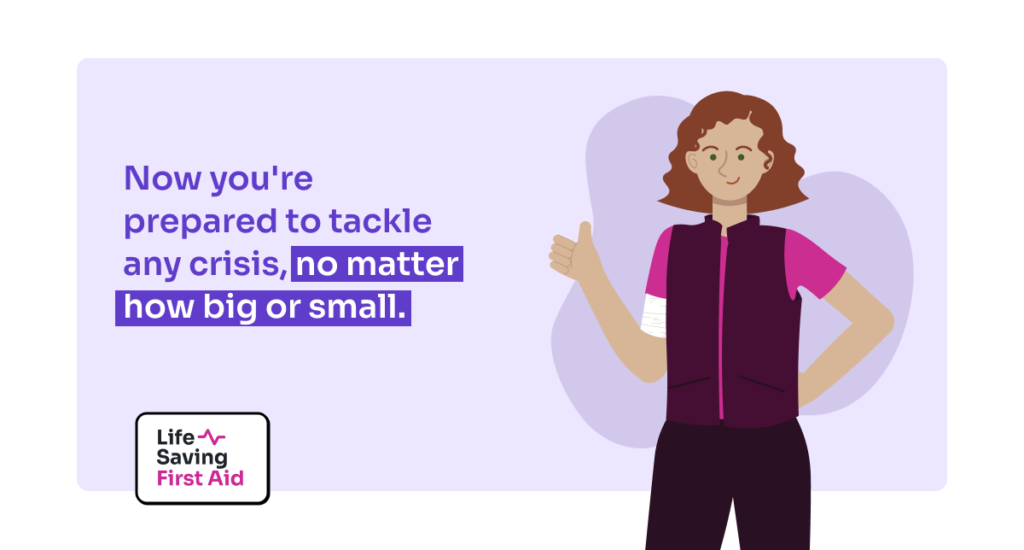Introduction
When it comes to emergencies, you never know when you’ll need a helping hand – or a first aid kit! Using our First Aid Checklist you will have a fully stocked First Aid Kit at the ready.
Injuries, accidents, and illnesses can happen to anyone at any time, and being prepared can make all the difference. Not only does it give you peace of mind, but it can also potentially save someone’s life or, at the very least, help alleviate pain and discomfort. So, let’s dive into why having a first aid kit on hand is more important than ever!
This article will include all the information required for the ultimate checklist first-aid kit for your situation. We have you covered for everything, including the necessities like gauze, sticky bandages and tailoring your kit to meet your requirements.
We’ll also offer you the inside scoop on properly storing your first aid kit, whether for use at home, in the vehicle, or on outdoor excursions.
We’ll also throw in a few pointers for keeping your stuff accessible and organised, so you’ll never be caught off guard.
After using our First Aid Kit checklist, you’ll feel like a first-aid kit expert. We guarantee it!

The Essentials of a First Aid Kit.
So, what are the essentials for a first aid kit, you ask?
Well, let’s start with the basics. In Australia, each State and territory has their regulatory authority that offers rules, regulations, and Codes of Practice regarding Occupational Health and safety in the workplace. This includes thorough guidelines regarding the checklist for first aid kits!
The various regulatory authorities in Australia are:
Safe Work Australia (Commonwealth) https://www.safeworkaustralia.gov.au
Work safe Victoria https://www.worksafe.vic.gov.au
Safe Work New South Wales https://www.safework.nsw.gov.au
Work Safe Queensland https://www.worksafe.qld.gov.au
Work safe, Aust. Capital Territory https://www.worksafe.act.gov.au
Safe Work South Australia https://www.safework.sa.gov.au
Work safe Western Australia https://www.commerce.wa.gov.au/worksafe
Work Safe Tasmania https://worksafe.tas.gov.au.
The information contained in these documents can be easily adapted to home or domestic scenarios such as family parties and get-togethers since it has been written in an easy-to-read manner.
The basic workplace first aid kit contents below were taken from the “WorkSafe Victoria compliance code first aid in the workplace 2021” and provide a great basis for a comprehensive first aid kit whether you need it for your home, your office, car, or boat.
Later we will discuss considerations you can make to customise your first aid kit specific to your requirements.
The Ultimate First Aid Kit Checklist: Essentials Edition.

- First aid instructions / quick reference guide x 1.
- Notebook and pen or pencil x 1.
- Disposable surgical face masks x 4.
- Resuscitation face mask or face shield with one-way valve x 1.
- Disposable nitrile gloves (nitrile is a latex-free rubber suitable for people with latex allergies) 5 pairs in various sizes.
- Gauze swabs 10 x 10 cm, sterile (3-pack) x 5 packs.
- Saline 15 ml or 30 ml 8 x 15 ml or 4 x 30 ml
- Adhesive dressing strips – plastic or fabric, a packet of 50 x 1
- Non-adherent wound dressing/pad 5 x 5 cm (small) x 6
- Non-adherent wound dressing/pad 7.5 x 7.5 cm (medium) x 3
- Non-adherent wound dressing/pad 10 x 10 cm (large) x 3
- Conforming crepe bandage, light, 5 cm width, x 3
- Conforming crepe bandage, light, 7.5 cm width 3Conforming crepe bandage, 10 cm width x 1
- Scissors x 1
- Adhesive tape, non-stretch, hypoallergenic, 2.5 cm wide roll x 1
- Dressing – combine pad 9 x 20 cm x 2.
- Resealable bag – large x 2
- Triangular bandage minimum width 110 x 155 cm x 2
- Eye pads, single-use 2 Instant cold pack for treatment of soft tissue injuries and some stings x 1
- Alcohol-based hand sanitiser x 1
- Emergency accident blanket x 1
With these items ticked off your first aid kit checklist, you’ll be able to easily tackle cuts, scrapes, sprains, and muscle aches.
Whether you’re at home, on the go, or out exploring, these essentials will be there to lend a helping hand. So, remember to pack them before you head out!
Customising your First Aid Kit
So, you’ve got the essentials covered, but what if you want to tailor your first aid kit to your specific needs?
The contents of your first aid kit should be determined by a basic risk assessment.
Think of the hazards you will likely face and add the appropriate items to your first aid kit.
Here are some examples:
First and foremost, consider potential hazards such as
- manual tasks,
- working at heights or uneven or slippery surfaces,
- electricity,
- hazardous chemicals,
- hazardous atmosphere,
- extreme temperatures,
- potential violence,
- biological
- animals such as snakes and spiders.
Secondly, consider the activities you’ll be doing.
- Are you planning a camping trip? Pack some extra bandages and antiseptic wipes.
- Hitting the beach? Toss in some sunscreen and aloe vera.
- Going on a picnic, Bushwalking, or cycling trip,
the possibilities are endless, so put your thinking cap on and get creative!
And lastly, don’t forget to periodically check and restock your kit; the items in your first aid kit have expiry dates and need to be replaced, so it’s always ready when needed.
Planning and preparation now can go a long way if you find yourself in a pinch. So, go ahead and make that first aid kit your own!
Additional items to consider.

And let’s remember those extra little items that can make all the difference in a first aid emergency.
- Scissors: Scissors can come in handy to cut gauze or tape.
- Thermometer: Keep an eye on any fever and ensure it’s under control.
- Splint or rolled-up towels: Immobilize a sprain or break and keep it steady.
- CPR face shield: Be prepared for an emergency and potentially save a life.
- Personal medications: Remember to pack any chronic condition meds. Such as asthma medication or an anaphylaxis autoinjector such as EpiPen.
- Additional supplies for specific activities: Tailor your kit to your needs, whether sunscreen for a beach trip or extra bandages for a camping trip.
- Regular check and restocking: Ensure your kit is always ready and fully stocked for emergencies.
Where to Keep your First Aid Kit.
Now that you’ve set up your ultimate first aid kit, it’s time to think about where to keep it. You want it to be easily accessible in an emergency and secure and protected from damage or theft.
A handy spot in the car boot is excellent for road trips, or you can tuck it away in a backpack for outdoor adventures.
At home, a kitchen cabinet or bathroom cupboard works wonders. Just make sure everyone in your household knows where it is so they can grab it in a pinch.
And if you’re on the go, don’t be afraid to get creative! Toss it in a nappy bag or keep it in your backpack for peace of mind.
No matter where you are or what you’re doing, it’s always a good idea to have a first aid kit on hand. And with so many options out there, it’s easy to find one that fits your specific needs.
At home, a compact and comprehensive kit is perfect for those everyday mishaps.
In your car, you want something portable and easy to grab in case of an emergency on the road.
And for outdoor excursions, a rugged and waterproof kit is essential for those unexpected adventures.
The most important thing is to have it within reach, so you’re ready for anything life may throw your way.
Conclusion

Having a first aid kit on hand can, in an emergency, be the difference between life and death.
You can quickly spring into action by. Keeping your first aid kit nearby and easily accessible.
Remember to maintain the fundamentals and modify your gear according to your unique demands, for use in your home, vehicle, or outdoors.
When you have a fully stocked, ready-to-go first aid kit, you can relax, knowing that you’re prepared to tackle any crisis, no matter how big or small.
Start assembling your ideal first-aid bag right now. Don’t wait until it’s too late!
Well that’s that. Until next time…Stay safe.
Adrian
